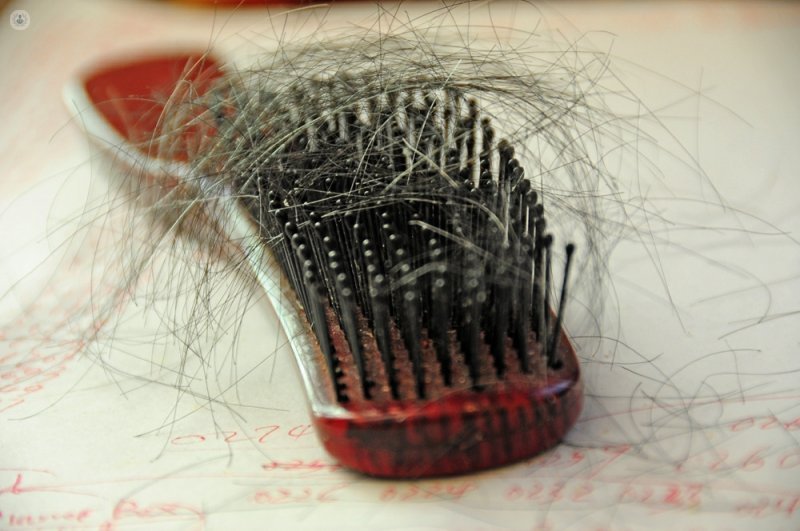Alopecia areata: what it is and how it is treated
Written by:Alopecia is the medical term for hair loss. It is an umbrella term which includes many different types which each have their own causes and treatments. Alopecia areata is the type of hair loss which results from your immune system mistakenly attacking hair follicles. It is characterised by circular bald patches.

What causes alopecia areata?
Alopecia areata is an autoimmune disease (when the immune system mistakenly attacks something which it thinks is harmful, in this case hair follicles). The immune system attacks hair follicles making them smaller, causing hair to fall out. It is not known what triggers alopecia areata but it occurs more frequently in people who have other autoimmune diseases, or who have a family history of them. Other common autoimmune diseases include type 1 diabetes, rheumatoid arthritis, autoimmune hepatitis, primary biliary cirrhosis, and multiple sclerosis, though there are many more.
What are the symptoms of alopecia areata?
Hair usually falls out in small, circular patches on the top of the head, though it may affect hair on the body as well. The patches are normally small, a few centimetres or less. You may first notice that clumps of hair are falling out, maybe in the shower or on your pillow in the morning. The extent of the hair loss, and the time it lasts are unpredictable and vary greatly. Hair may grow back entirely, or the condition may return.
How is alopecia areata diagnosed?
It is often possible to diagnose alopecia areata by judging the extent of the hair loss and examining a few hairs under a microscope. A scalp biopsy may be performed in order to rule out other conditions and blood tests may be carried out if other autoimmune conditions are suspected.
How is alopecia areata treated?
In terms of physical health, it does not need to be treated. The symptoms of alopecia are aesthetic, though hair loss can have a devastating effect on a person’s confidence and even lead to depression. There is no known cure for alopecia areata though hair normally grows back within a year. It can be treated however, and there are a number of options:
- Corticosteroid injections and creams
Corticosteroids contain steroids which suppress the immune system. This is useful in alopecia areata because the condition is caused by the immune system damaging the hair follicles. Corticosteroid injections appear to be the most effective treatment for small patches of alopecia, though It is necessary for the injections are repeated every few weeks.
- Immunotherapy
An effective treatment for cases involving extensive or total hair loss. Diphencyprone (DPCP) is applied to the affected areas of skin every week using a stronger dose each time. It eventually causes an allergic reaction leading to mild eczema which, in some cases, leads to hair regrowth after around 12 weeks.
- Ultraviolet light treatment
Two to three sessions of phototherapy are given every weekly. The affected skin is exposed to ultraviolet rays. The treatment can take up to a year to work and results vary greatly. In addition, the side effects include, nausea, increased risk of skin cáncer and pigmentation changes, so it is not often recommended.
- Wigs, hair transplants and tattoos
It's possible to replicate hair with a wig or a tattoo (for very short hair). Hair transplants are an option but are very costly. If you suffer from alopecia areata you require treatment you should seek advice from a GP or a specialist dermatologist.


